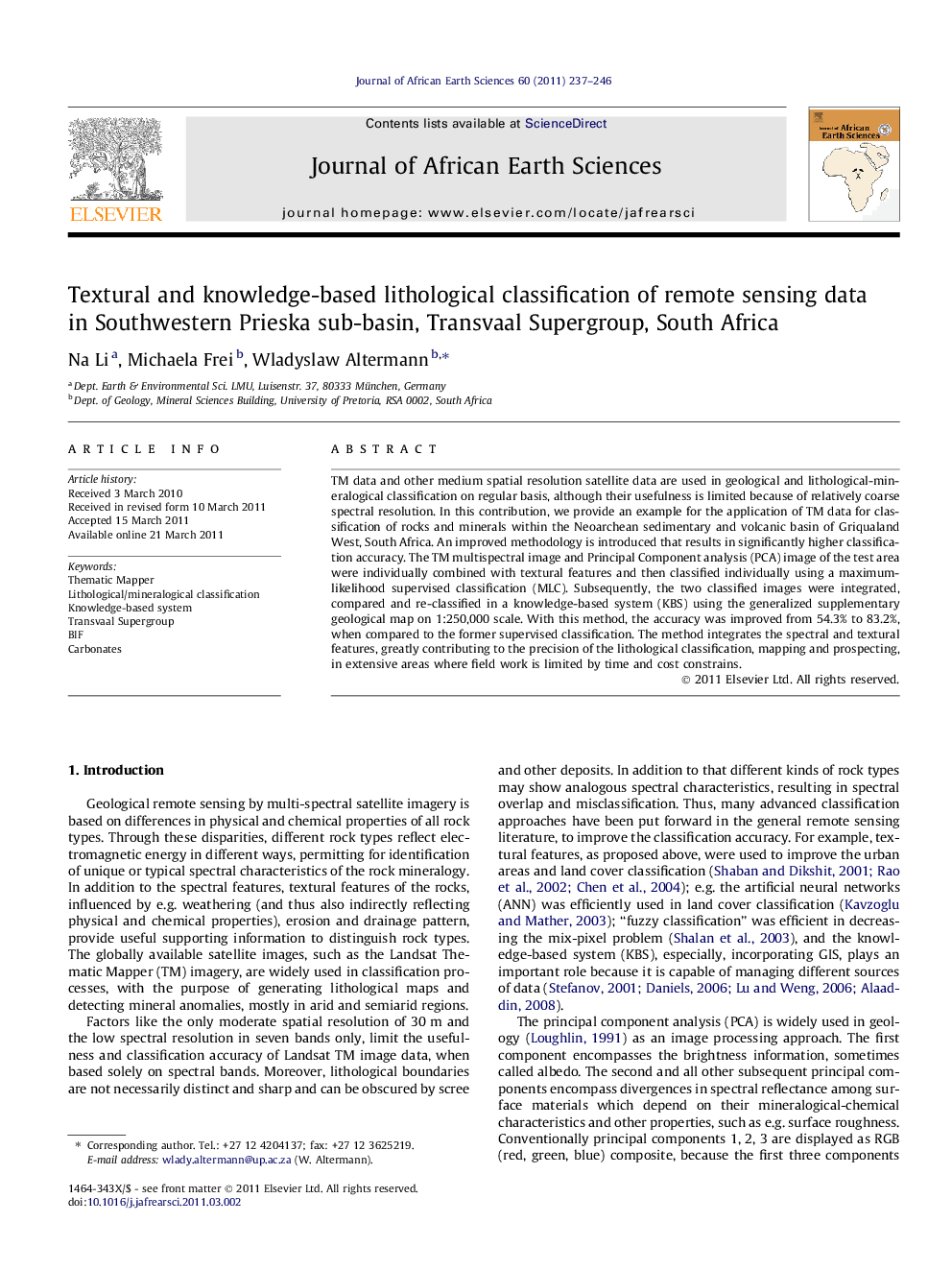| Article ID | Journal | Published Year | Pages | File Type |
|---|---|---|---|---|
| 4729172 | Journal of African Earth Sciences | 2011 | 10 Pages |
TM data and other medium spatial resolution satellite data are used in geological and lithological-mineralogical classification on regular basis, although their usefulness is limited because of relatively coarse spectral resolution. In this contribution, we provide an example for the application of TM data for classification of rocks and minerals within the Neoarchean sedimentary and volcanic basin of Griqualand West, South Africa. An improved methodology is introduced that results in significantly higher classification accuracy. The TM multispectral image and Principal Component analysis (PCA) image of the test area were individually combined with textural features and then classified individually using a maximum-likelihood supervised classification (MLC). Subsequently, the two classified images were integrated, compared and re-classified in a knowledge-based system (KBS) using the generalized supplementary geological map on 1:250,000 scale. With this method, the accuracy was improved from 54.3% to 83.2%, when compared to the former supervised classification. The method integrates the spectral and textural features, greatly contributing to the precision of the lithological classification, mapping and prospecting, in extensive areas where field work is limited by time and cost constrains.
► Remote sensing study of Neoarchean sedimentary basin of Griqualand West, South Africa. ► This paper shows the application of TM data for classification of rocks and minerals. ► A method is introduced with a significantly improved classification accuracy. ► The method integrates the spectral and textural features of rocks like BIF, carbonates.
